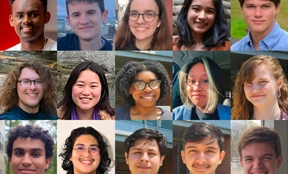
TREND 2024 end-of-summer conference poster gallery and booklet.

Project type: Computation and Experiments
This project will not be available in Summer 2025
Schooling allows fish to swim more efficiently, but it is unclear what hydrodynamic mechanisms facilitate this benefit. The propulsive motion of a swimming fish creates alternating patterns of vorticity in water that could in principle be exploited by conspecifics to reduce drag or enhance thrust. Field and laboratory experiments have shown that schools generally do not conform to highly regularized topologies and flow visualization and 3D computational fluid dynamics have shown that the wake of fishes do not follow the assumed pattern of classic models. Recent work has re-evaluated the fundamental topological unit for hydrodynamic benefits in terms of pairs of interacting swimmers.
TREND participants in this project would engage addressing questions about schooling and its applications in engineered systems such as:
This project will investigate sensory and hydrodynamic benefits of close-proximity swimming in fish and fish-inspired underwater vehicles using a principled mathematics-based approach.
Professor Paley has worked with nearly 60 undergraduate students in his Collective Dynamics and Control Laboratory, including nine TREND students.
Want help getting in touch with this mentor? Reach out to Daniel.